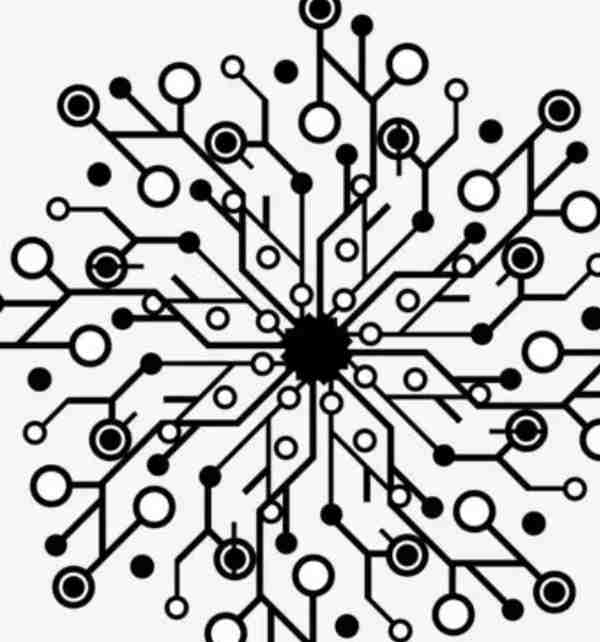
Power consumption refers to the energy consumed per unit time. Power consumption in digital systems mainly includes static power consumption and dynamic power consumption. We will discuss static power consumption and dynamic power consumption from the perspective of CMOS circuits.
CMOS static power consumption: Power consumption when the CMOS is not flipping/not working. When the CMOS is not working, that is, when the transistors are in the cut-off state, there is no current flowing from VDD to GND, but there is still some small current flowing from the source to the ground. This static current Idd is called the leakage current between the power source and the ground, which is related to the device (as to how the leakage current is caused, it will not be explained here). In junior high school, we learned that P=UI, so static power consumption can be expressed like this:
IC design: CMOS devices and their circuits
The dynamic power consumption of CMOS is the power consumed by capacitor charging and discharging when the signal changes between 0 and 1. As we know, not only CMOS devices have parasitic capacitors, but also capacitance between wires. CVdd^2 is the energy required to charge capacitor C to voltage Vdd. If the capacitor transforms f times per second (that is, the capacitor switches at a frequency of f, and in one second the capacitor charges f/2 times and discharges f/2 times), since the discharge does not require power from the supply, the dynamic power can be expressed as follows:
IC design: CMOS devices and their circuits
PS: The above list mainly lists some major power consumption. For example, in dynamic power consumption, in addition to the capacitor power consumption when flipping, there is also the short-circuit power consumption caused by the simultaneous on-off of PMOS and NMOS when the gate * signal is flipping.
The above two types of power consumption are mainly considered. Maybe we'll talk more about that later when we document the low power design.

First, regulated power supply
1, 3 ~ 25V voltage adjustable voltage regulator circuit diagram
The voltage regulator can be adjusted in the range of 3.5V ~ 25V, the output current is large, and the adjustable voltage regulator tube circuit, so as to obtain satisfactory and stable output voltage.
Working principle: After the rectifier filter DC voltage provided by R1 to adjust the tube base *, so that the adjustment tube on, V1 on voltage through RP, R2 to V2 on, and then V3 also on, then V1, V2, V3 emission and collector voltage no longer change (its role is the same as the regulator). Adjust RP, can get a stable output voltage, R1, RP, R2 and R3 ratio determines the voltage value of the circuit output.
Component selection: Transformer T uses 80W ~ 100W, input AC220V, output double winding AC28V. 1A for FU1 and 3A ~ ** for FU2. Use 6A02 for VD1 and VD2. RP uses about 1W ordinary potentiometer, resistance value is 250K ~ 330K, C1 uses 3300µF / 35V electrolytic capacitor, C2, C3 uses 0.1µF stone capacitor, C4 uses 470µF / 35V electrolytic capacitor. R1 uses 180 ~ 220Ω/0.1W ~ 1W, R2, R4, R5 uses 10KΩ, 1/8W. 2N3055 was selected for V1, 3DG180 or 2SC3953 for V2, and 3CG12 or 3CG80 for V3
2, 10A3 ~ 15V regulated power supply circuit diagram
Whether the maintenance of the computer or electronic production can not be separated from the regulated power supply, the following introduces a DC voltage from 3V to 15V continuous adjustable voltage power supply, large current up to 10A, the circuit with temperature compensation characteristics, the most advanced standard voltage source integrated circuit TL431, so that the stability accuracy is the highest, if there is no requirement, basically can meet the normal maintenance use, The circuit is shown below.
Its working principle is divided into two parts, part is a fixed 5V1. * The second part is another route 3 to 15V continuous adjustable high current voltage regulator circuit. The circuit is very simple, by the transformer secondary 8V AC voltage through the silicon bridge QL1 rectified DC voltage after C1 electrolytic capacitor filtering, and then by the 5V three-terminal regulator LM7805 does not use any adjustment can be produced at the output end of the fixed 5V1A regulated power supply, the power supply can be used as an internal power supply when the maintenance of the computer board. * Two parts and ordinary series type voltage regulator power supply is basically the same, the difference is the use of temperature compensation characteristics, the best standard voltage source integrated circuit TL431, so the circuit simplification, cost reduction, and voltage regulator performance is very high.
In the figure, the resistor R4, the regulator TL431, and the potentiometer R3 form a continuously adjustable constant voltage source, providing reference voltage for BG2 base *. The regulator TL431 has a continuously adjustable voltage value, which determines the large output voltage of the regulator power supply. If you want to expand the adjustable voltage range, you can change the resistance values of R4 and R3. Of course, the secondary voltage of the transformer should also be increased. Transformer power can be flexibly mastered according to the output current, secondary voltage about 15V. The rectifier tube QL for bridge rectifier uses a 15-20A silicon bridge, which is compact and has a fixing screw in the middle, which can be directly fixed on the aluminum plate of the housing for favorable heat dissipation. Adjust the pipe is a large current NPN metal shell silicon tube, because of its heat is very large, if the case allows, try to buy a large heat sink, expand the heat dissipation area, if you do not need a large current, you can also change the power of a small silicon tube, so that the volume can be smaller. The filter uses 50V4700uF electrolytic capacitor C5 and C7 in parallel, respectively, to make the large current output * stable.
In addition, this capacitor should be purchased with a relatively large volume, and those with a small volume should also be marked 50V4700uF as far as possible. When the voltage fluctuations are frequent, or when not used for a long time, it is easy to fail. Then talk about the power transformer, if there is no ability to wind their own, can not buy ready-made, you can buy a ready-made more than 200W switching power supply instead of transformer, so the voltage performance can be further improved, the production cost is not too much, other electronic components without requirements, after installation without too much adjustment can work normally.







